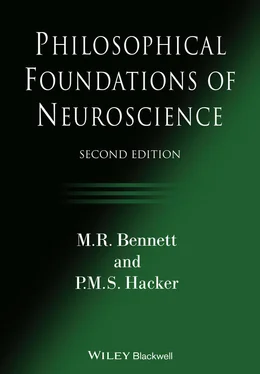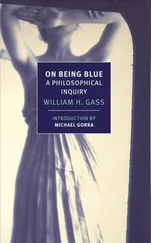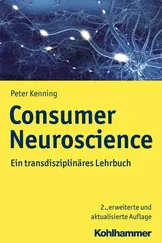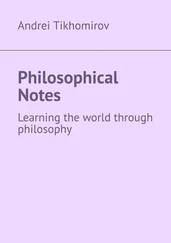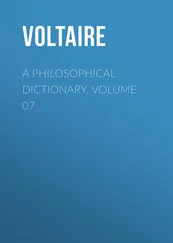Bell and Magendie: identification of sensory and motor spinal nerves
We have seen the confusion that was still present in the eighteenth century concerning reflexes and the extent to which Whytt had to invoke a conception of the soul in relation to the function of the spinal cord in order to explain reflex action. This difficulty was to remain until a demarcation emerged between the sensory and motor functions of the posterior and anterior roots of the spinal cord at the beginning of the nineteenth century. This was due to Charles Bell (1774–1842), who identified the anterior roots as motor, and to François Magendie (1783–1855), who was responsible for the idea that the posterior roots are sensory. Much controversy attended the attribution of these discoveries. 70
It is striking that the arguments for the claim that the anterior roots are motor in function did not involve any reference to the action of either the soul or a sensorium commune. The reason why debate on these issues came to be based on experimental observations alone, without any such reference, is clear. Bell’ s and Magendie’ s experiments did not involve disruption of the spinal cord or removal of the brain, so questions as to how reflexes could be elicited without the brain did not arise. Rather, their research centred on the effects of cutting nerves that lead from the brain and spinal cord to the peripheral parts of the body. Bell had satisfied himself by dissection that the anterior and posterior roots were continuous with particular columns of the spinal cord that were connected to the brain. So there was no conflict between the idea that the soul resides only in (or interacts only with) the brain and the fact that severing the roots produced the effects observed. In an incisive passage, Bell seems also to have understood correctly the integrative power of the spinal cord in decapitated animals: ‘the spinal marrow has much resemblance to the brain, in the composition of its cineritious and medullary matter. In short its structure declares it to be more than a nerve, that is, to possess properties independently of the brain.’ 71In this passage the requirement of a soul or a sensorium commune in the spinal cord is abandoned, even though animals without brains are being considered.
Bell does not seem to have made any reference to the posterior roots possessing a sensory function. This may be explicable by the fact that most of his work was carried out on stunned rabbits. It was Bell’ s contemporary, Magendie, who first distinguished between motor and sensory nerves in relation to the anterior and posterior roots. In its proceedings for 1822, the French Academy of Science announced: ‘Monsieur Magendie reports the discovery he has recently made, that if the posterior roots of the spinal nerves are cut, only the sensation of these nerves is abolished, and if the anterior roots are cut, only the movements they cause are lost.’ 72These experiments established the sensory nature of the posterior nerves.
The experiments of Bell and Magendie provided the grounds for what became known as the Bell–Magendie hypothesis of spinal roots, which is best stated in Magendie’ s words: ‘it is sufficient for me at present to be able to advance as positive, that the anterior and posterior roots of the nerves which arise from the spinal marrow, have different functions, that the posterior appear more particularly destined to sensibility, whilst the anterior seem more especially allied to motion’. 73
Marshall Hall: isolating sensation from sensing in the spinal cord
Bell and Magendie had avoided becoming caught up in the controversies as to whether the spinal cord contained a soul capable of initiating motion independently of the cerebrum. This, as we have seen, was because the experiments they performed involved only cutting the spinal nerves. Nevertheless, the apparent problem remained of how sensibility (i.e. the ability to feel a sensation) could be associated (as it seemed that it had to be associated) with the isolated spinal cord. This problem was largely dissolved by Marshall Hall (1790–1857) in the 1830s. He gave a full communication to the Royal Society in 1833 entitled ‘On the reflex function of the medulla oblongata and medulla spinalis’, in which he concluded that ‘there is a property of the sentient and motor system of nerves which is independent of sensation and volition; – a property of the motor nerves independent of immoderate irritation; – a property which attaches itself to any part of an animal, the corresponding portion of the brain and spinal marrow of which is entire’. 74
The spinal cord as a reflex centre – the true spinal marrow: Hall makes the supposition of a spinal soul redundant
By 1837 Hall had given an account of the spinal cord as containing a reflex centre that operated in a non-sentient and non-volitional manner by contrast with the nerves of sensation which pass up to the brain and the motor nerves of volition that pass down from the brain. These conclusions were revolutionary inasmuch as they stated clearly that sensory nerves exist that do not produce sensations and that motor nerves exist that do not merely mediate volitional acts. So reflex acts do not require a nervous arc from muscle to brain and then from brain to muscle, as Charles Bell had thought. Rather, the reflex arc required
1 a nerve leading from the point or part irritated to and into the spinal cord marrow,
2 the spinal marrow itself,
3 a nerve or nerves passing out of or from the spinal marrow; all in essential relation or connection with each other. 75
This work laid the foundations for, and in some respects anticipated, Sherrington’ s work later in the century. Following Hall, the notions of a spinal soul and a spinal Sensorium communis were, by and large, abandoned. In 1831 Johannes Muller confirmed the Bell–Magendie law experimentally.
In 1890 Michael Foster (1836–1907) published the fifth edition of his great work A Textbook of Physiology , in which he gave a succinct account of the relationship between spinal reflexes and the brain. Yet even in the last decade of the nineteenth century the idea of a spinal cord soul still lingered and was considered by Foster in his Textbook to be worthy of consideration, as in his comments that:
We may thus infer that when the brainless frog is stirred by some stimulus to a reflex act, the spinal soul is lit up by a momentary flash of consciousness coming out of the darkness and dying away into the darkness again; and we may perhaps further infer that such a passing consciousness is the better developed the larger the portion of the cord involved in the reflex act and the more complex the movement. 76
1.5 Localizing Function in the Cortex: Broca, Fritsch and Hitzig
Broca: the cortical area for language; Fritsch and Hitzig: the motor cortex
Although the first experiments indicating a specialized area of the cortex for motor control were reported by Fritsch and Hitzig in 1870, it could be claimed that the first evidence for cortical specialization was that reported by Paul Broca (1824–1880) in 1861 for speech. In that year Broca reported the results of an autopsy on the cortex of one of his patients, a Monsieur Leborgne, who had suffered from loss of speech (aphasia). Broca found a lesion in the left anterior (frontal) lobe, which, he suggested, was the language area of the cortex. Subsequently it became known as Broca’ s area. 77
There was little progress in the understanding of the function of the cortex for nearly 200 years, between the death of Thomas Willis in 1675 and, as we shall see, the experiments of Fritsch and Hitzig around 1870. For example, the leading French physiologist of the day, Marie-Jean-Pierre Flourens (1794–1867), claimed, as a consequence of his researches on pigeons ( c . 1824), that the cortex was concerned only with perception, intellectual abilities and the will, not with motor action. 78He showed in 1858 that the motor action involved in respiration could be delimited to the medulla, and did not involve the brain. Furthermore, according to Flourens, these functions of the cortex could not be ascribed to different areas of the cortex, for this acted as a whole. All sensations, all perception and all volition, he argued, occupy concurrently the same seat in these organs. The faculty of sensation, perception and volition, he therefore concluded, is essentially one faculty.
Читать дальше
